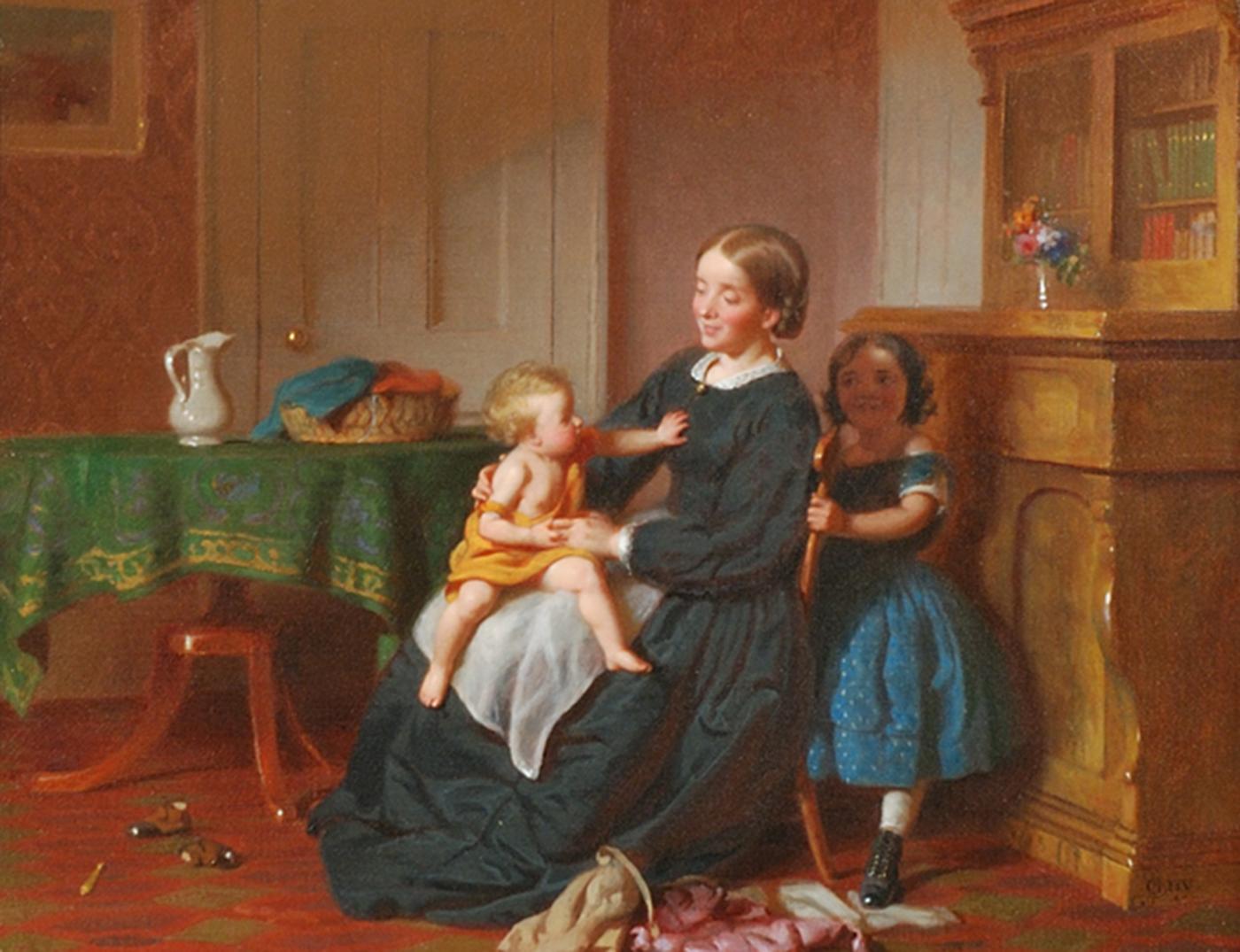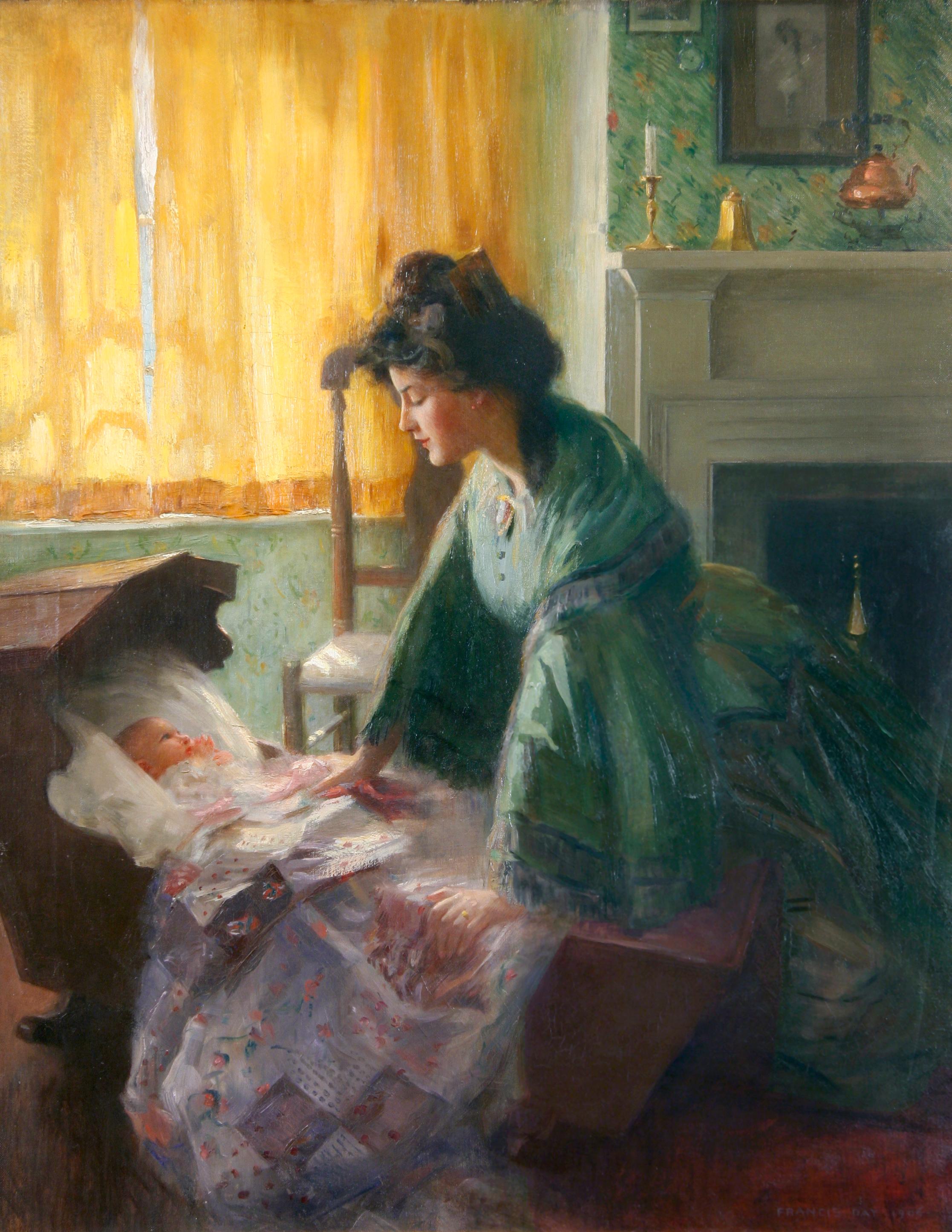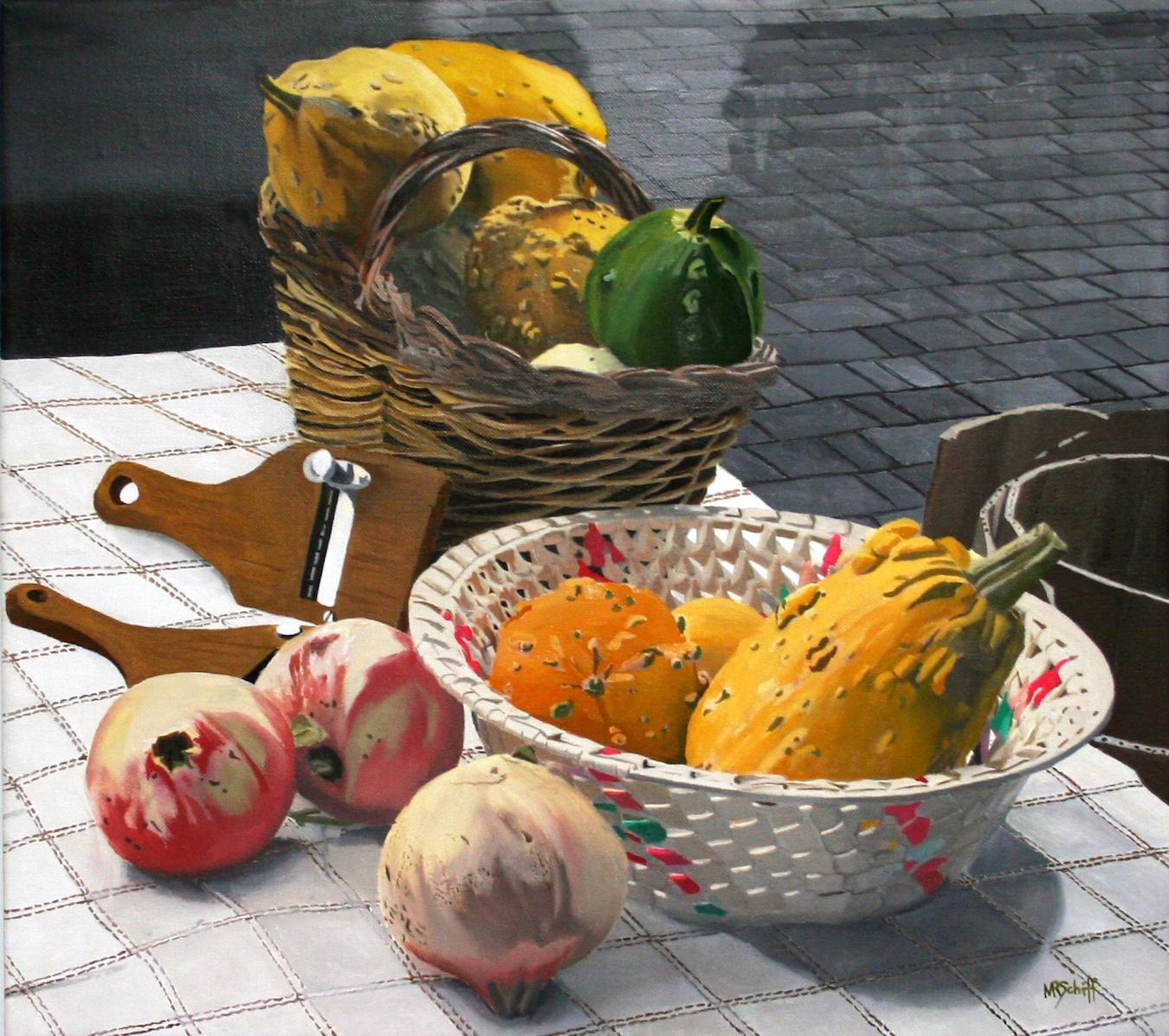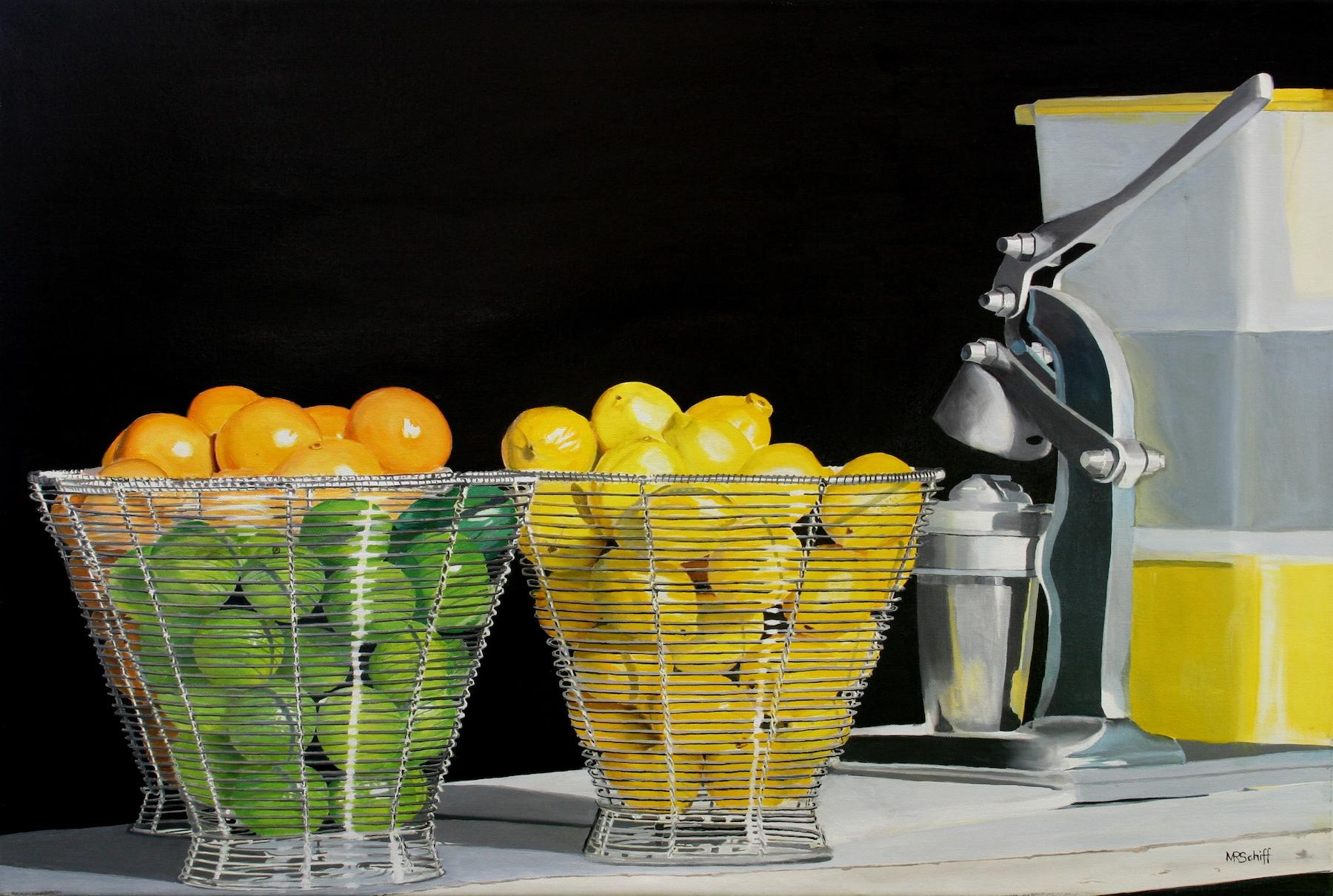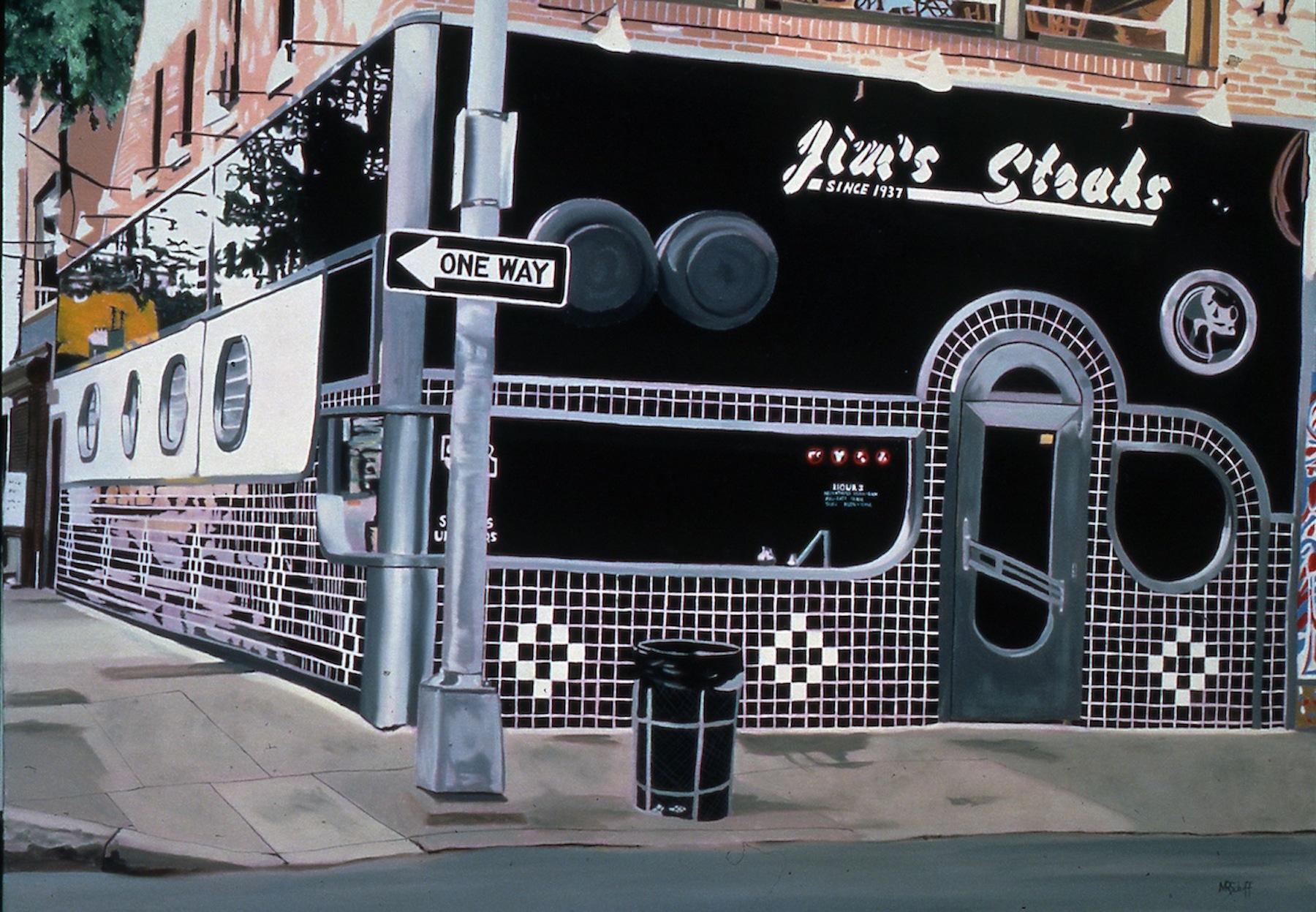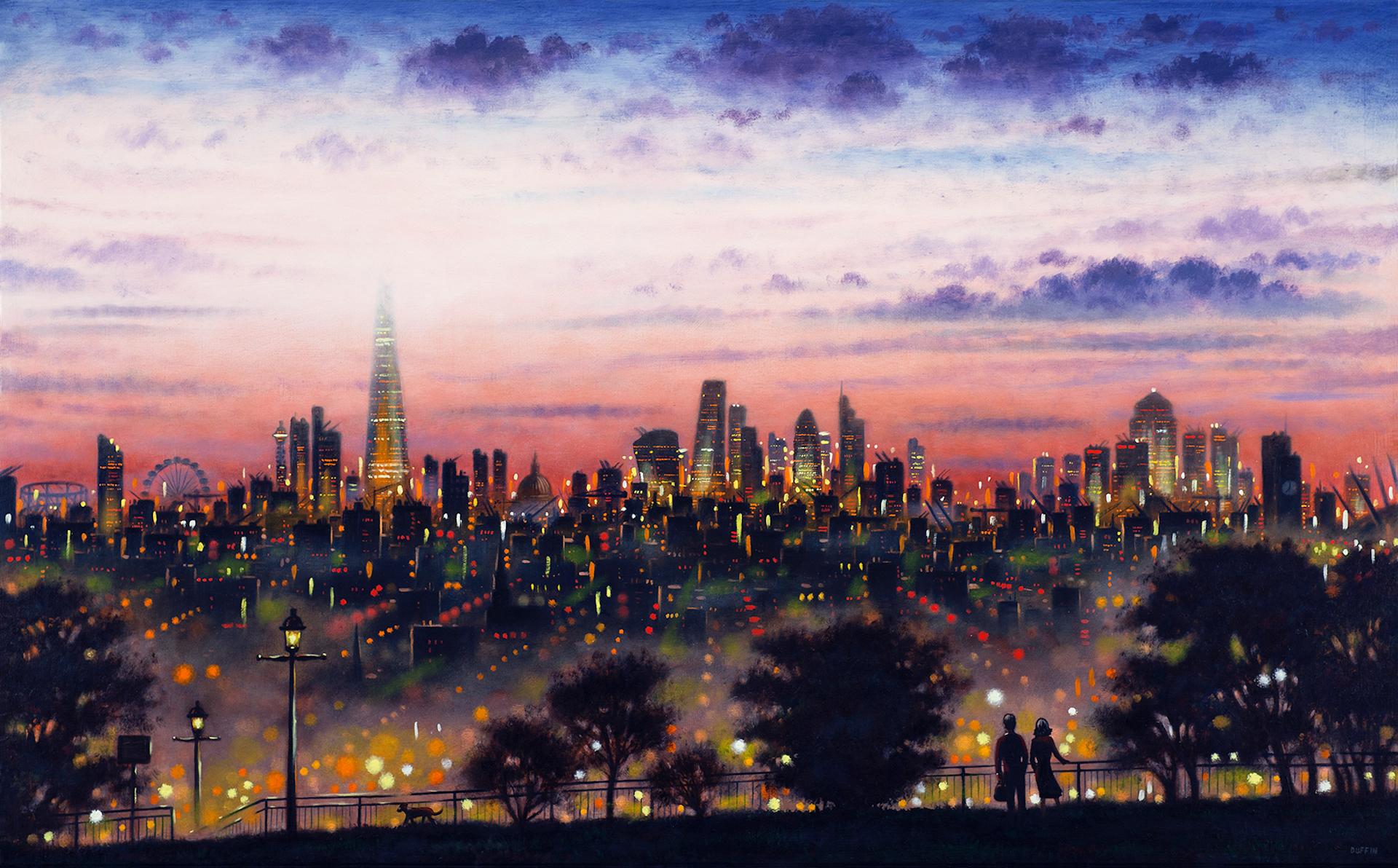Items Similar to Green Bike
Want more images or videos?
Request additional images or videos from the seller
1 of 5
Paul SchulenburgGreen Bike2019
2019
About the Item
I think of my work as being like a visual journal- observations and interpretations of people, places and things I experience day to day. Translating that experience into two dimensional imagery is a challenge that I look forward to whether I am in my studio or out painting on site. It's about the exploration of design, light, shadow, color and texture. Subject matter may vary just as daily experiences will change. I enjoy the hard architectural elements of an urban landscape or an interior space, and occasionally I like contrasting that with the softness and vulnerability of the human form.
Whatever the focus of a particular painting, I find that when I really connect with my subject, other people viewing my work can sense that and feel the connection as well. There is a narrative quality to my painting, but it's a partial narrative. I often find that what is most interesting is what is left unsaid. To quote Edward Hopper: "If you could say it in words there would be no reason to paint."
- Creator:
- Creation Year:2019
- Dimensions:Height: 24 in (60.96 cm)Width: 18 in (45.72 cm)
- Medium:
- Movement & Style:
- Period:
- Condition:
- Gallery Location:Fairfield, CT
- Reference Number:1stDibs: LU18324138792
About the Seller
5.0
Vetted Seller
These experienced sellers undergo a comprehensive evaluation by our team of in-house experts.
Established in 1996
1stDibs seller since 2015
236 sales on 1stDibs
Typical response time: 3 hours
- ShippingRetrieving quote...Ships From: Fairfield, CT
- Return PolicyThis item cannot be returned.
More From This SellerView All
- Spring FlowersBy Paul SchulenburgLocated in Fairfield, CTRepresented by George Billis Gallery. I think of my work as being like a visual journal- observations and interpretations of people, places and things I experience day to day. Tran...Category
21st Century and Contemporary American Realist Interior Paintings
MaterialsCanvas, Oil
- High Street on HudsonBy Paul SchulenburgLocated in Fairfield, CTRepresented by George Billis Gallery. I think of my work as being like a visual journal- observations and interpretations of people, places and things I experience day to day. Tran...Category
21st Century and Contemporary American Realist Interior Paintings
MaterialsCanvas, Oil
- Eggs, Bacon & CoffeeBy Matt CondronLocated in Fairfield, CTHaving spent many years as a photographer, Matt Condron is trained to recognize the importance of a moment or the preciousness of a fleeting opportunity. He is captivated by the idea of emptiness, as both a suggestion of solitude and as a state rife with the possibility of change and fulfillment. As a painter, he seeks out familiar, evocative scenes and concentrates on capturing the stillness of an empty room or vacant chair. His paintings can be seen as solitary, or as simply aberrant pauses between moments of frantic activity. The works are imbued with a quality of light that brings simple, content-rich objects into sharp focus. Condron attempts to establish not so much a connection to a chair or a room, but the feeling created by the wide embrace of emptiness. Ultimately, Condron creates scenes - part representation of real places, part invention from deep in his mind. The openness of his works invites the viewer to share the moment of quiet with him. By choosing places that seem to have been abruptly vacated, he attempts to awaken a connection to the moment before, or to the quietude he preserves inside himself in the form of memories. Matt Condron was born in 1967 in Simi Valley...Category
2010s American Realist Interior Paintings
MaterialsCanvas, Oil
- Southland BoothsBy Matt CondronLocated in Fairfield, CTHaving spent many years as a photographer, Matt Condron is trained to recognize the importance of a moment or the preciousness of a fleeting opportunity. He is captivated by the idea of emptiness, as both a suggestion of solitude and as a state rife with the possibility of change and fulfillment. As a painter, he seeks out familiar, evocative scenes and concentrates on capturing the stillness of an empty room or vacant chair. His paintings can be seen as solitary, or as simply aberrant pauses between moments of frantic activity. The works are imbued with a quality of light that brings simple, content-rich objects into sharp focus. Condron attempts to establish not so much a connection to a chair or a room, but the feeling created by the wide embrace of emptiness. Ultimately, Condron creates scenes - part representation of real places, part invention from deep in his mind. The openness of his works invites the viewer to share the moment of quiet with him. By choosing places that seem to have been abruptly vacated, he attempts to awaken a connection to the moment before, or to the quietude he preserves inside himself in the form of memories. Matt Condron was born in 1967 in Simi Valley...Category
2010s American Realist Interior Paintings
MaterialsCanvas, Oil
- The Low SeasonBy Matt CondronLocated in Fairfield, CTHaving spent many years as a photographer, Matt Condron is trained to recognize the importance of a moment or the preciousness of a fleeting opportunity. He is captivated by the idea of emptiness, as both a suggestion of solitude and as a state rife with the possibility of change and fulfillment. As a painter, he seeks out familiar, evocative scenes and concentrates on capturing the stillness of an empty room or vacant chair. His paintings can be seen as solitary, or as simply aberrant pauses between moments of frantic activity. The works are imbued with a quality of light that brings simple, content-rich objects into sharp focus. Condron attempts to establish not so much a connection to a chair or a room, but the feeling created by the wide embrace of emptiness. Ultimately, Condron creates scenes - part representation of real places, part invention from deep in his mind. The openness of his works invites the viewer to share the moment of quiet with him. By choosing places that seem to have been abruptly vacated, he attempts to awaken a connection to the moment before, or to the quietude he preserves inside himself in the form of memories. Matt Condron was born in 1967 in Simi Valley...Category
2010s American Realist Interior Paintings
MaterialsCanvas, Oil
- DrugsBy Danny HellerLocated in Fairfield, CTRepresented by George Billis Gallery, NY & LA -- My latest series opening at the George Billis Gallery, titled “Modern Society,” continues my exploration into midcentury architect...Category
21st Century and Contemporary American Realist Interior Paintings
MaterialsCanvas, Oil
You May Also Like
- Peek-a-BooBy Seymour Joseph GuyLocated in New York, NYIn the latter half of the nineteenth century and into the first decade of the twentieth, New York City art aficionados could count on finding recent work of Seymour Joseph Guy hanging on the walls of the city’s major galleries. Primarily a genre artist, but also a portraitist, between 1859 and 1908 Guy showed more than seventy works at the National Academy of Design. From 1871 to 1903 he contributed over seventy times to exhibitions at the Century Club. From 1864 to 1887, he sent about forty pictures to the Brooklyn Art Association. A good number of these works were already privately owned; they served as advertisements for other pictures that were available for sale. Some pictures were shown multiple times in the same or different venues. Guy was as easy to find as his canvases were omnipresent. Though he lived at first in Brooklyn with his family and then in New Jersey, from 1863 to his death in 1910 he maintained a studio at the Artist’s Studio Building at 55 West 10th Street, a location that was, for much of that period, the center of the New York City art world. Guy’s path to a successful career as an artist was by no means smooth or even likely. Born in Greenwich, England, he was orphaned at the age of nine. His early interest in art was discouraged by his legal guardian, who wanted a more settled trade for the young man. Only after the guardian also died was Guy free to pursue his intention of becoming an artist. The details of Guy’s early training in art are unclear. His first teacher is believed to have been Thomas Buttersworth...Category
19th Century American Realist Figurative Paintings
MaterialsCanvas, Oil
- Light of LoveLocated in Washington, DCExhibited: National Academy of Design, New York, 1906 (as no. 101) Art Institute of Chicago, 1908 (as no. 74)Category
Early 1900s American Realist Figurative Paintings
MaterialsCanvas, Oil
- GourdsBy Mark SchiffLocated in Boca Raton, FLGourds by Mark Schiff We guarantee that you will love this painting. If not, you can return it for a complete refund, no questions asked.Category
Early 2000s American Realist Still-life Paintings
MaterialsCanvas, Oil
- Sweet and SourBy Mark SchiffLocated in Boca Raton, FLSweet and Sour by Mark Schiff We guarantee that you will love this painting. If not, you can return it for a complete refund, no questions asked.Category
Early 2000s American Realist Still-life Paintings
MaterialsCanvas, Oil
- Jim's Steaks -- Original Oil Painting -- Please watch attached videoBy Mark SchiffLocated in Boca Raton, FLPlease see accompanying video. We are a 1stdibs Platinum Seller with 100% 5-star reviews. One cannot appreciate this painting on a computer screen; in real life, it is absolutely amazing. Because you cannot appreciate it on a computer screen, our gallery has a unique policy. When purchasing from us, the buyer has sixty days to determine if they want to keep the artwork. If not, the buyer returns to piece to us for full refund, and we pay the shipping both ways! A collector should consider several factors when deciding from whom to purchase artwork online. Check the location of the seller. When one buys from a foreign seller, one also has to consider the problems of getting the piece through Customs. There are often delays and considerable fees to pay in order to import the item. When purchasing from us, we ship the same day and you receive it via FedEx the next day, no problems or hassles. When one purchases from an auction house, one pays a buyer’s premium of anywhere from 23% to 28% over the “hammer price”. So when one “wins” an auction for $20,000, the actual price paid is more like $25,000. By contrast, when purchasing from us, the price agreed to is the price paid by the buyer, no hidden fees. Secondly, when one purchases from an auction house, the buyer pays the packing and shipping fee, which are usually exorbitant. By contrast, when purchasing from us, the price includes packing and shipping. Thirdly, when one purchases from an auction house, the sale is final. If one receives the piece and is not 100% satisfied with it, there is nothing the buyer can do about it. They are stuck with it. By contrast, when purchasing from us, the buyer has sixty days to determine if they want to keep it. If not, the buyer returns to piece to us for full refund, and we pay the shipping both ways. About Mark Schiff — Animated by photographs that reflect his personal life, Mark Schiff’s paintings are fueled by what makes him happy. Through his open touch and signature blending method, he lends his artistic perception to the original photographic compositions captured on his Leica. Mark’s creative vision has been alive since he was a boy. As a child he spent his summers observing life as he rode the trolley back and forth to art classes at the Pratt Institute. During his future travels to Europe, Mark’s eye for light and photography merged with his passion for painting at the Jeu de Paume in Paris; which triggered his career in photorealism. Mark is well known for painting objects that people can identify and emotionally connect with. His work is distinctly marked by a rich palette and the luminous range of light he paints into his compositions. Each painting is a true extension of his vision and can take up to 200 hours to complete. Mark Schiff’s work has been commissioned by the well-known brands The Hershey Company and Tropicana. His private collectors include A-list celebrities and also corporate collectors in the US and abroad. Possessing a strong philanthropic nature, Mark donates both his time and works to charitable organizations such as Big Brothers Big Sisters, The Ronald McDonald House, Make-A-Wish Foundation, The Humane Society and the Special Olympics. Photorealism is widely viewed as one of this century’s most exciting genres of art. When a photorealistic painting is viewed from afar, it looks like a photograph. Only when getting very close to the art does the viewer realize that it is in fact not a photo, but rather an oil painting. Photorealism can also refer to sculptures. Duane Hanson is known as the greatest photorealistic sculptor of all time. Some of the greatest photorealistic painters include Mark Schiff, Richard Estes, Ralph Goings, Charles Bell and Audrey Flack. Photorealist Mark Schiff was born in Bedford Stuyvesant, Brooklyn, in a neighborhood known as a kuchalane, a Yiddish word which Schiff defines as a place where everyone (from the Old Country) ended up living on the same street, and most likely knowing each other’s business. His Russian grandfather came to the US before the revolution and both his parents were first generation American. Even at five years of age, Mark showed exceptional talent. In the summer, his mother permitted him to travel by himself on the trolley for art classes at the Pratt institute. He continued studying there until he was eleven and the family moved to Great Neck. Except for a few art classes in high school and playing baritone horn in the band, Mark focused on other things besides art, especially when his mother worried for his financial future, kept insisting “that Jewish boys don’t starve to death.” His father made a good living as a production man in textiles so Mark, who had spent years doing the rounds of knitting mills with his father, decided to major in textile chemistry at North Carolina State. ROTC was mandatory on his campus and he did two years in order to be eligible for officer status. He won the Armed Forces Chemical Association award and thought for sure that he would be assigned chemical work, but instead was made a tank commander and stationed at Fort Knox. Not exactly what his heart yearned for, but a good job awaited him at Sandoz, a Swiss company that made dyestuff. What perfect training for someone who would soon be working in wonderful rich colors on canvas. He went on to receive his MBA degree from Hofstra University, left Sandoz and was hired to sell at a spinning mill. He liked it. In 1976 he joined Bennett Berman Associates and had an opportunity to buy the spinning mill Spun Fibers. But what of art? In the early days, Elsie, his wife of fifty-two years, had a problem with the large amount of space his canvases occupied in their one bedroom apartment. Mark took up photography instead, which only required a small darkroom. Photography was a natural ally for his eventual return to painting in the photorealistic style. It was on his second trip to Europe that Mark fell in love with painting all over again. The impressionistic museum, Jeu de Paume in Paris, renewed his passion and it’s been non-stop since then. Out came the brushes, but this time, he used his love and skill of photography, and built a style based on the photographs he had taken, bringing them to life with paint. Mark was still not painting to sell until in 1990 when someone discovered and desperately wanted his candy bar (Sweet Series) painting. Mark didn’t want to let go of that particular piece, but was finally convinced to sell it and a second candy painting to this ardent art and candy lover. Two years later, Mark was commissioned to make three paintings of this man’s new Ferrari. Some of the artists who have inspired his work are Richard Estes, Sandy Scott, Chuck Close, and Charles Bell. He appreciates the work of Ken Keeley, but unlike Keeley’s hard-lined/tape and ruler style, Mark prefers an open touch, using the blending method. Mark’s subject matters range from candy bars to spice racks to soda cans and soda bottles. He photographs with a Leica M-7 and each painting can take up to 200 or more hours to complete. His palette is rich; his subjects, be it a fire engine or a pretzel cart, take on a luminous quality, always photoreal, but even more beautiful. Mark developed his own technique for working with bottles by painting a canvas all black, so that the transparency of the bottles allows a wonderful range of light to filter through. The same light and reflection can be seen in the black rotary phone...Category
Early 2000s American Realist Still-life Paintings
MaterialsCanvas, Oil
- John Duffin, Blackheath, London Art, Cityscape Painting, Statement Art, BrightBy John DuffinLocated in Deddington, GBJohn Duffin Blackheath Original Cityscape Painting Oil Paint on Canvas Canvas Size: H 76cm x W 102cm x D 3cm Framed Size: H 80cm x W 106cm x D 4cm Sold Framed in a Black Float Frame ...Category
21st Century and Contemporary American Realist Landscape Paintings
MaterialsCanvas, Oil
